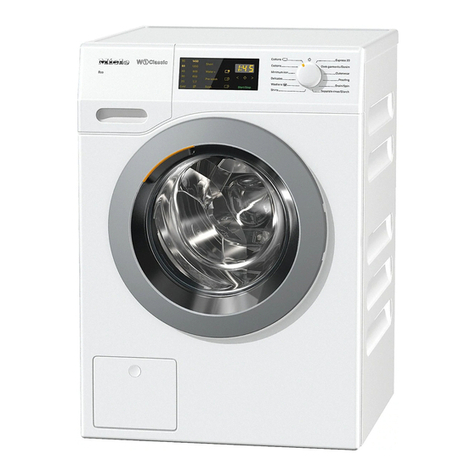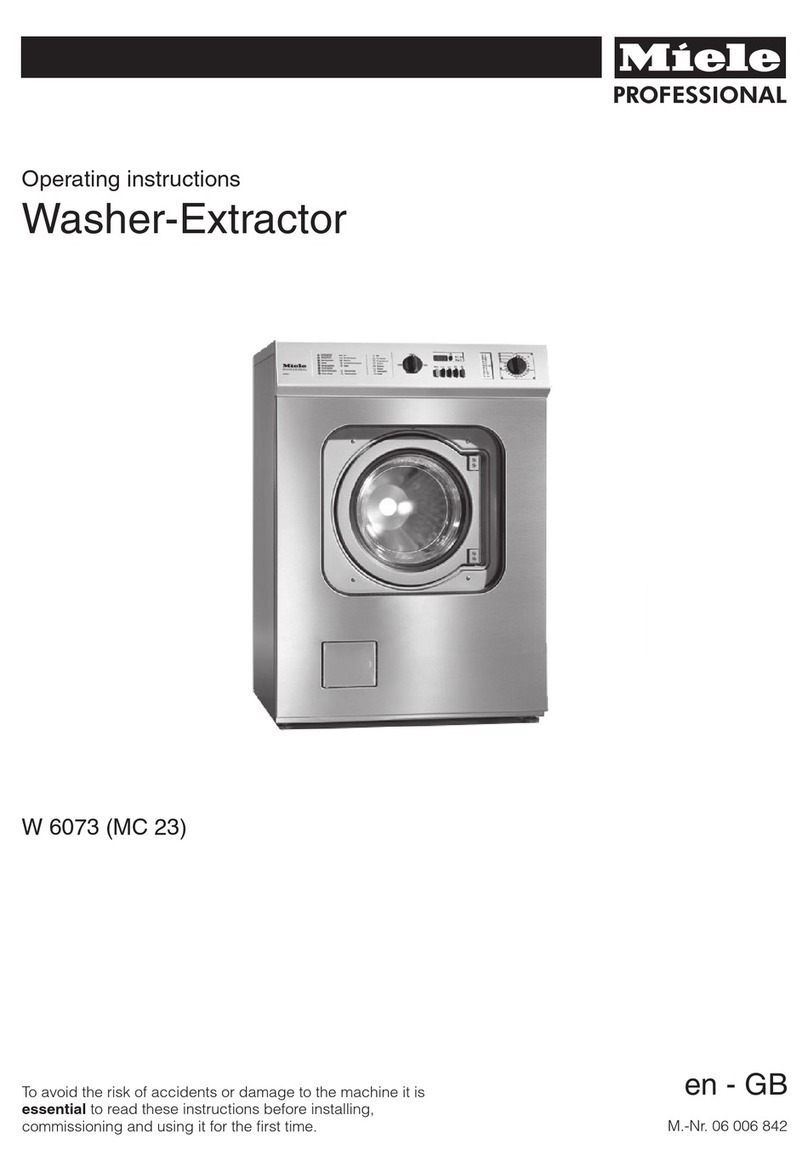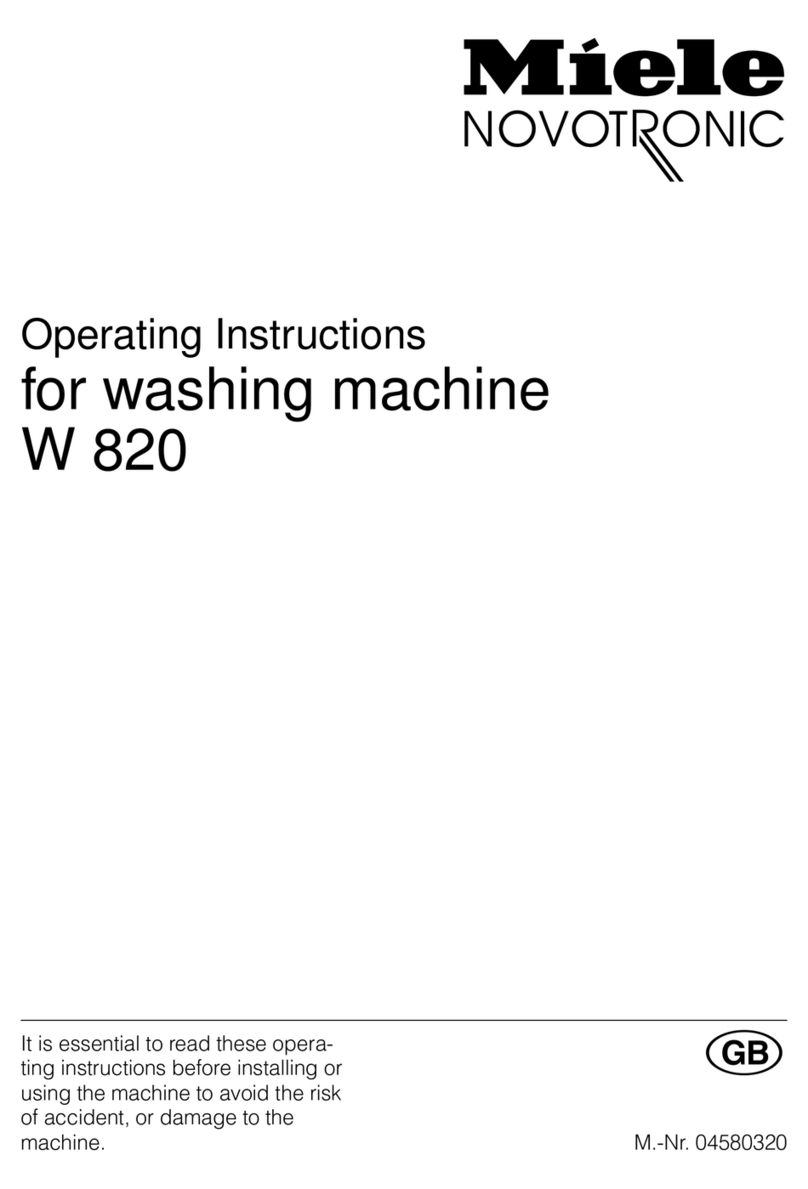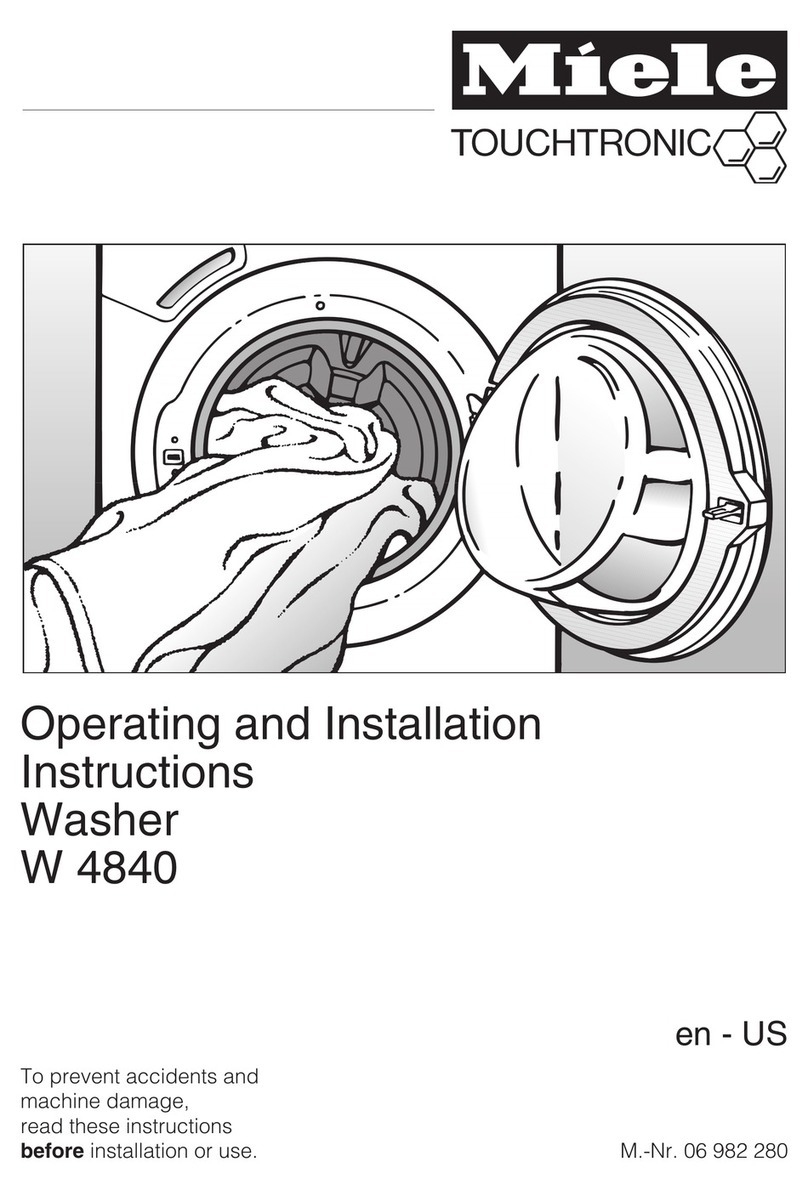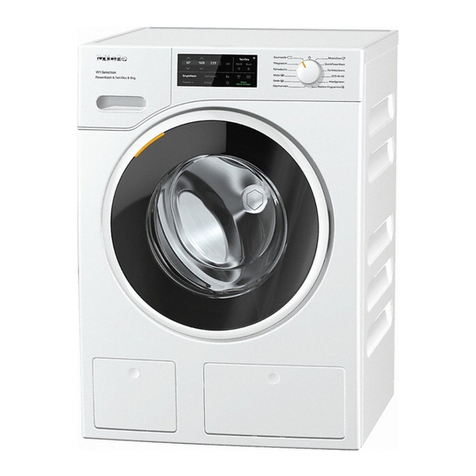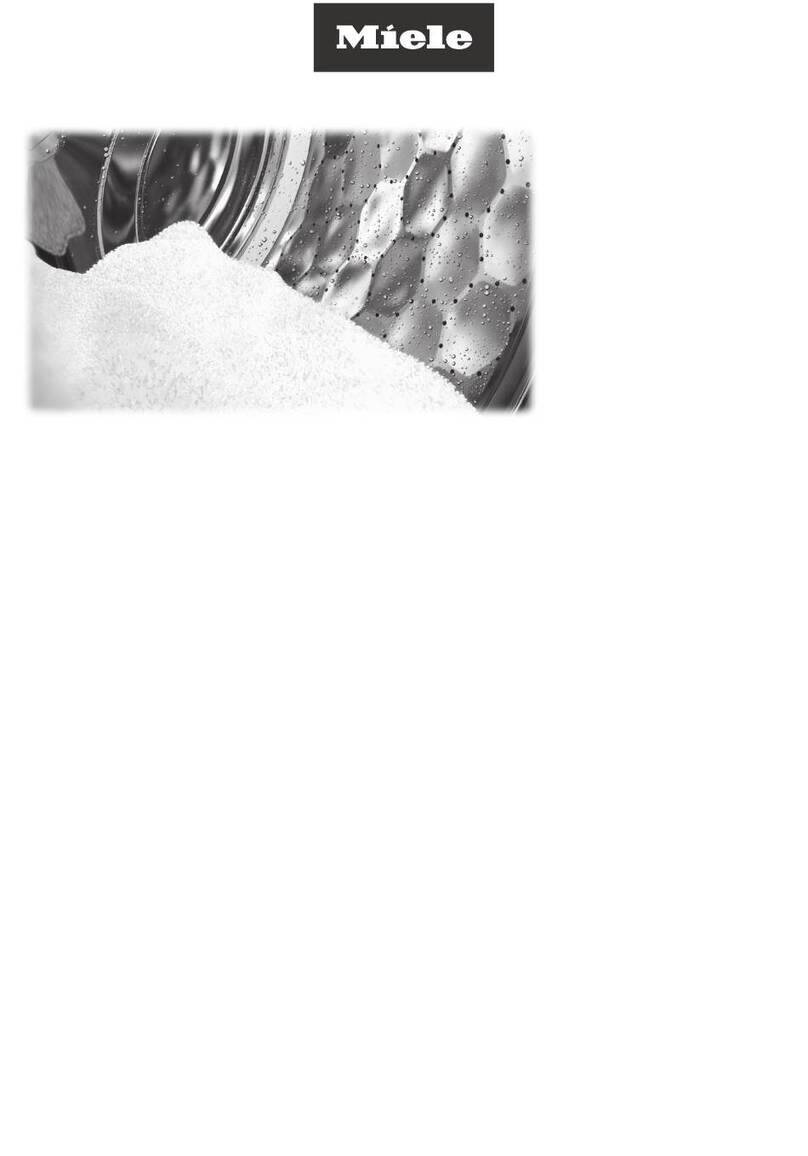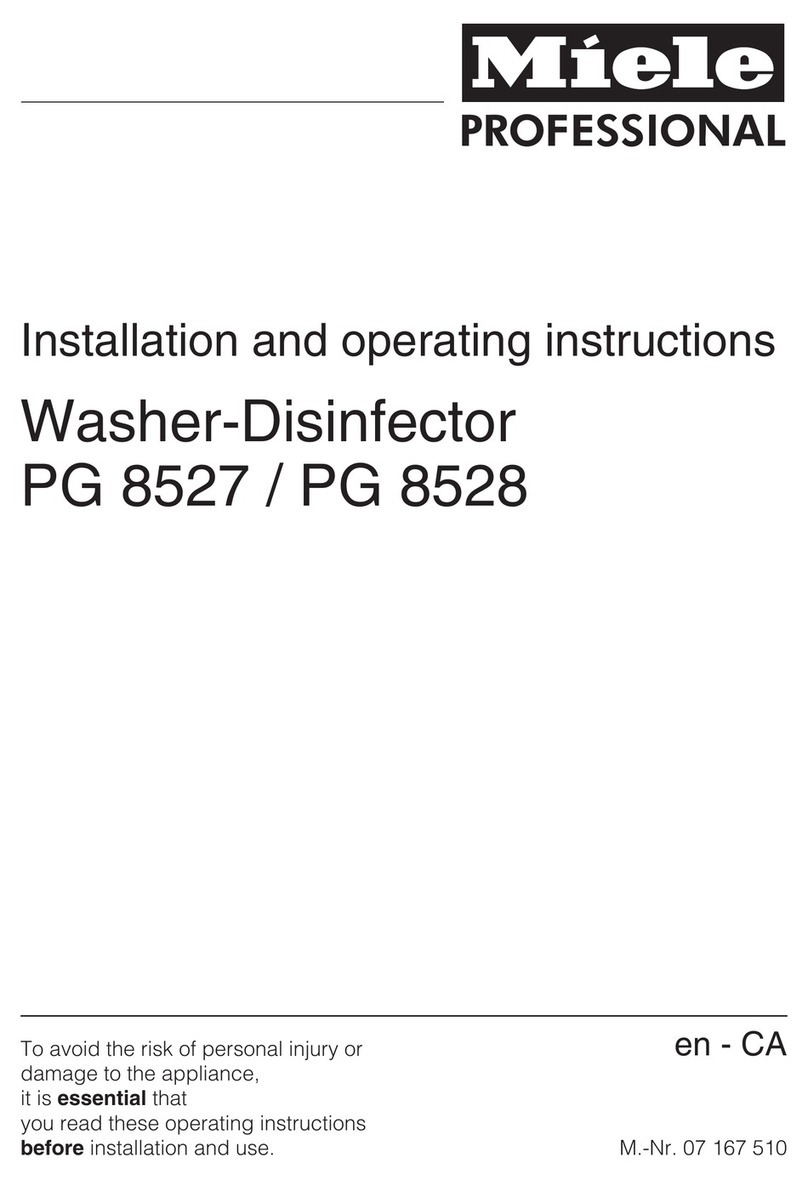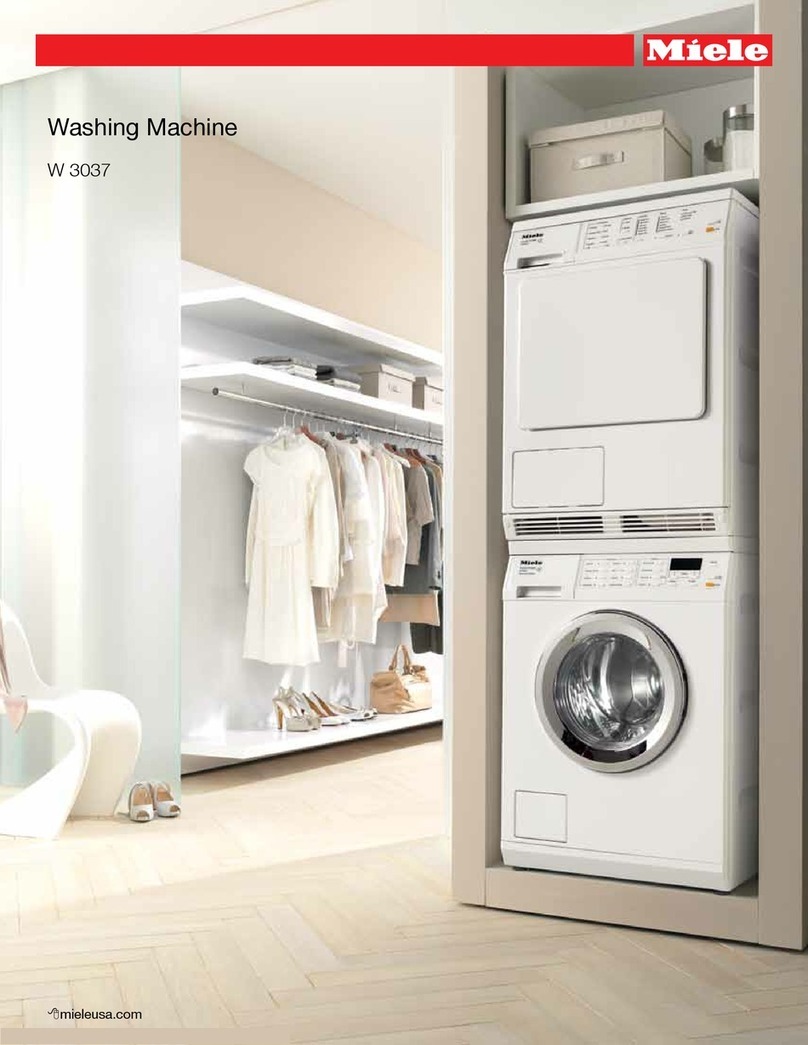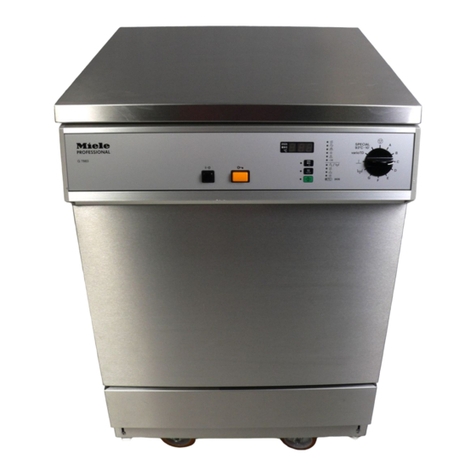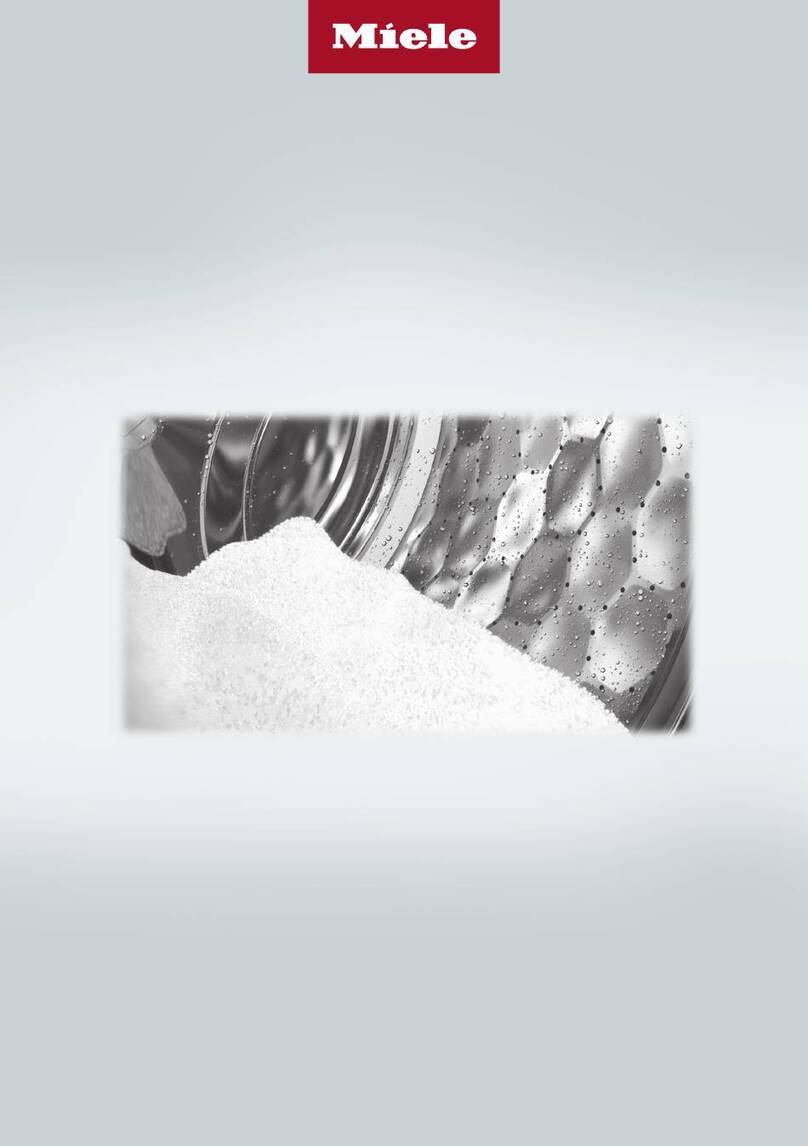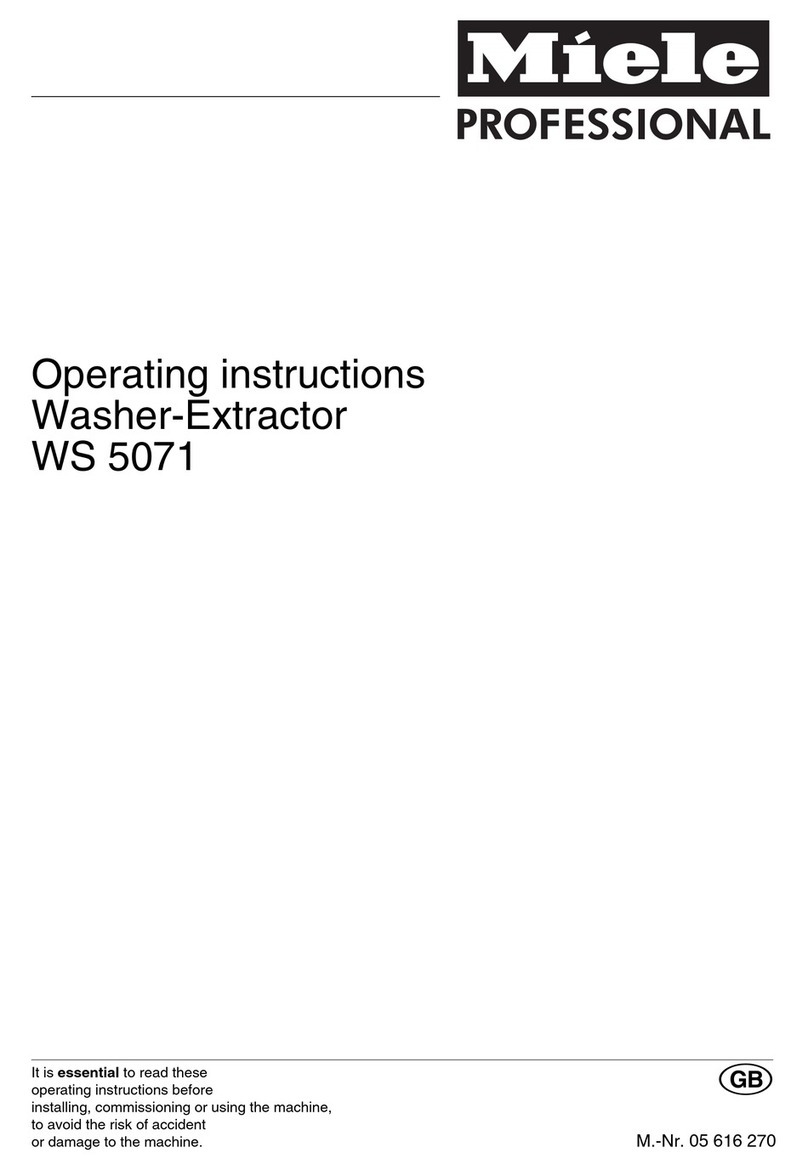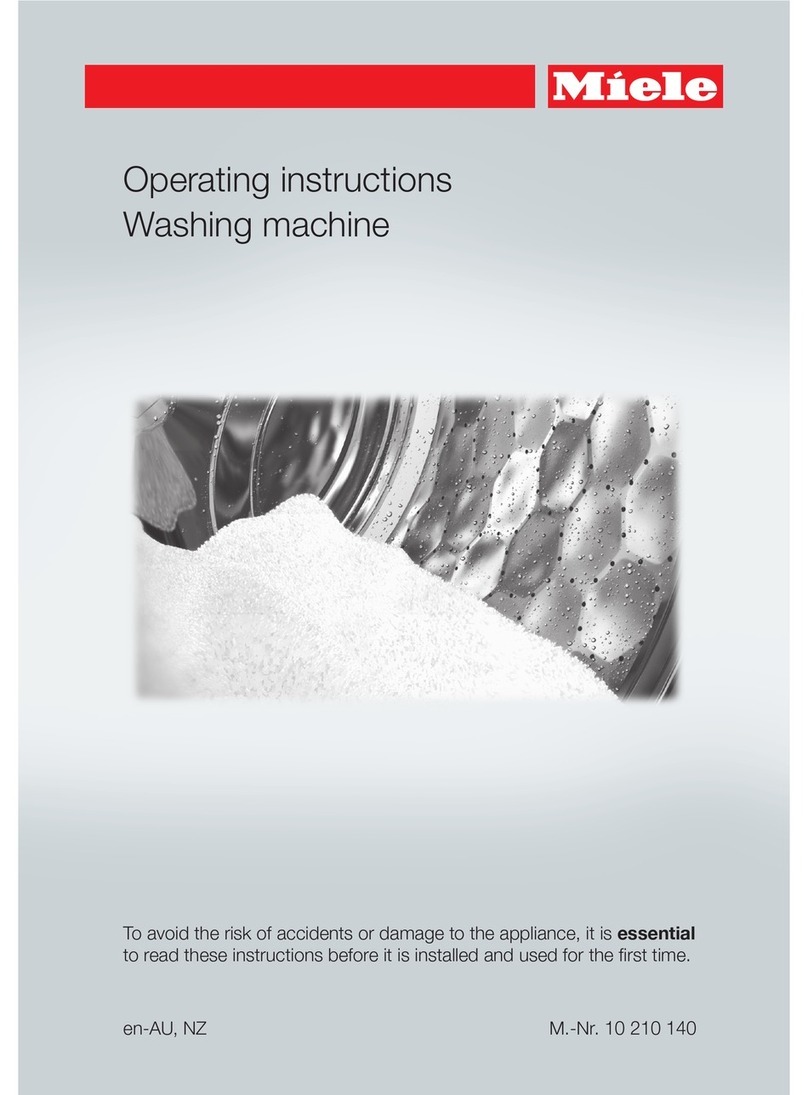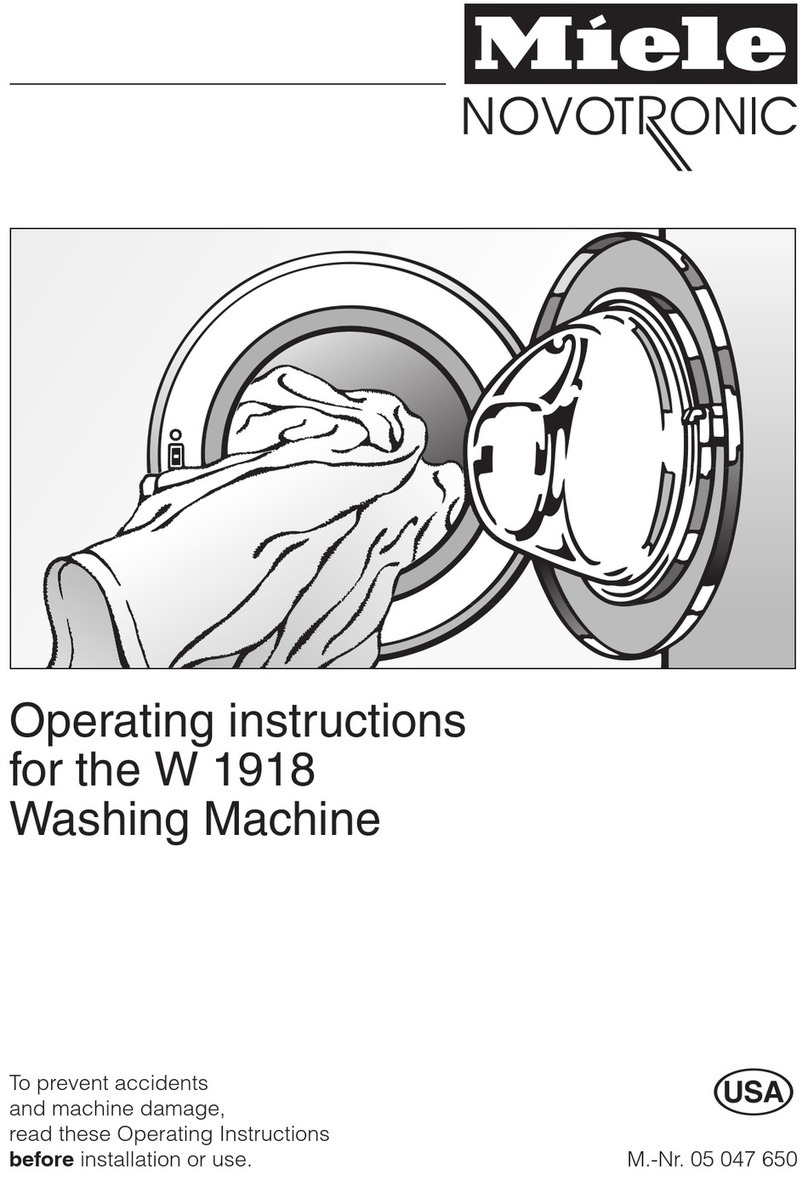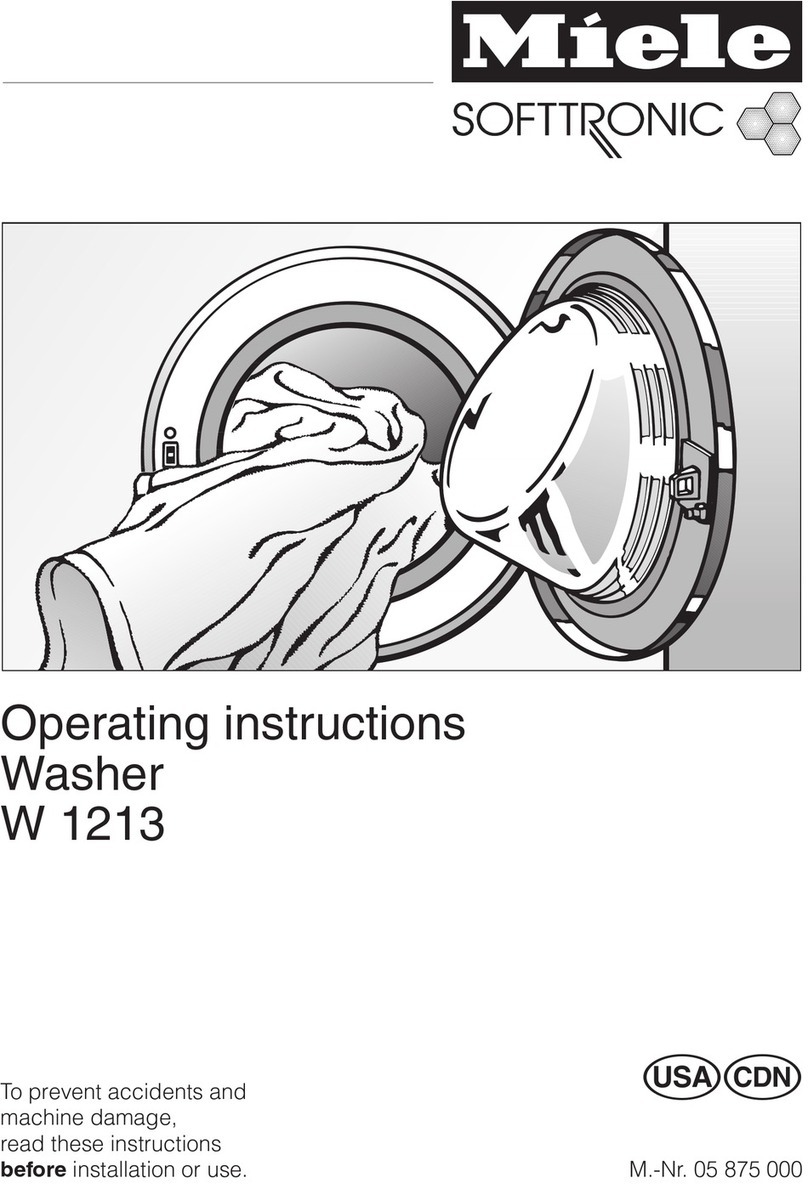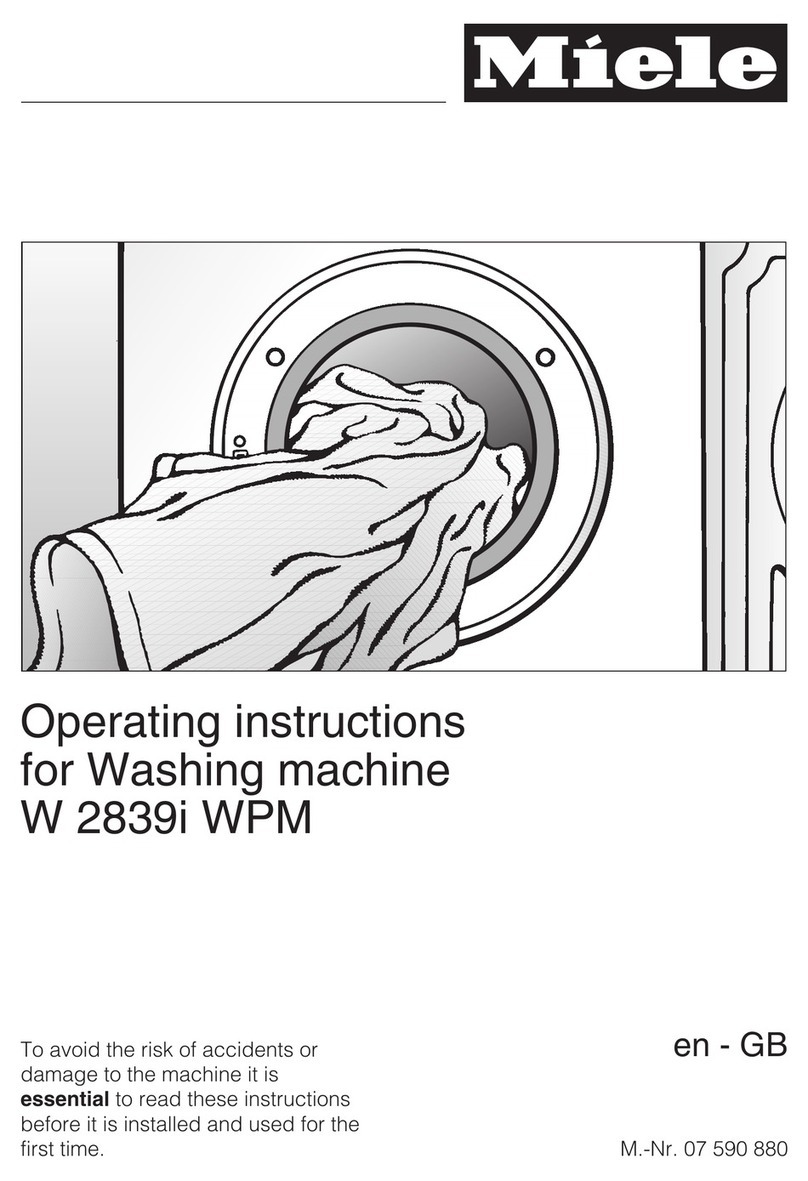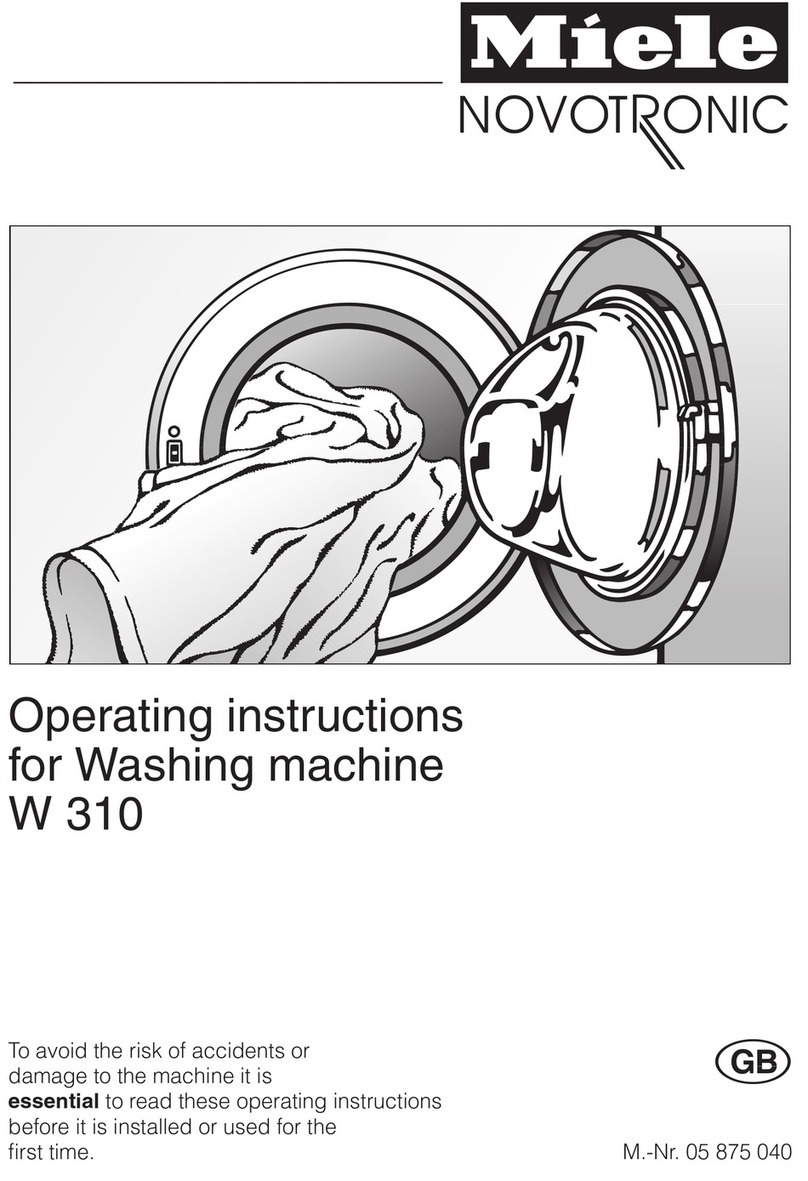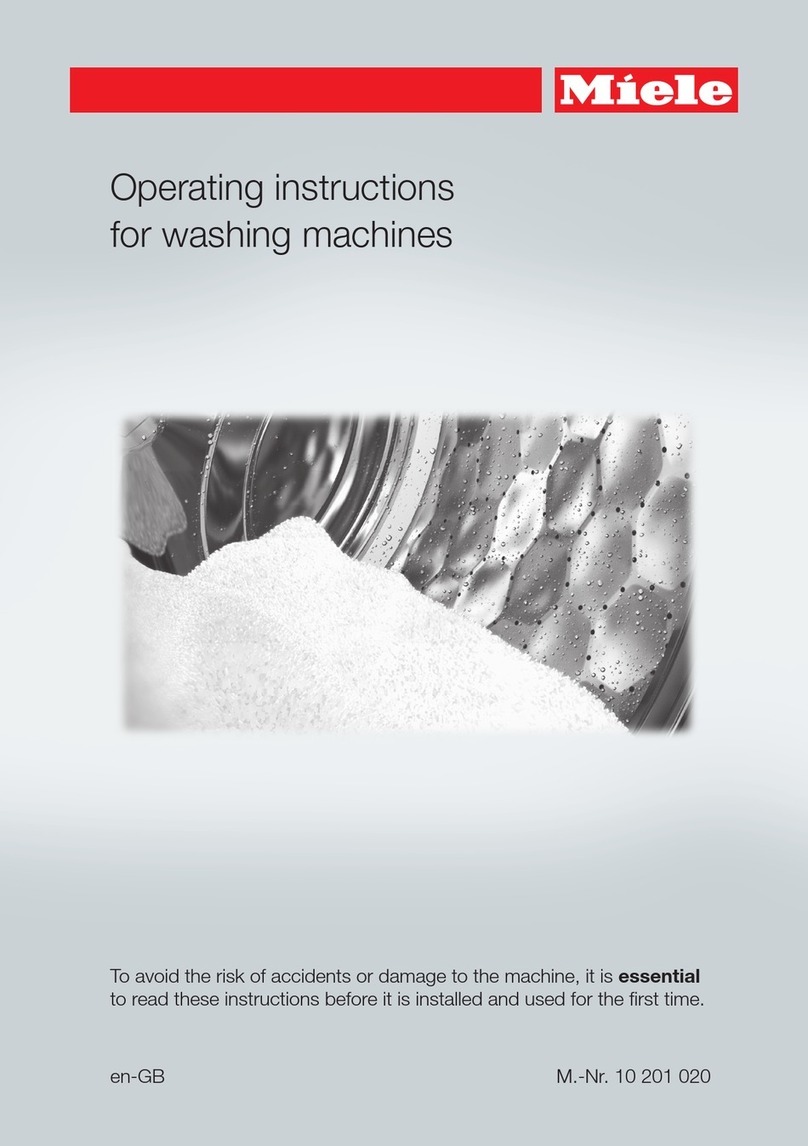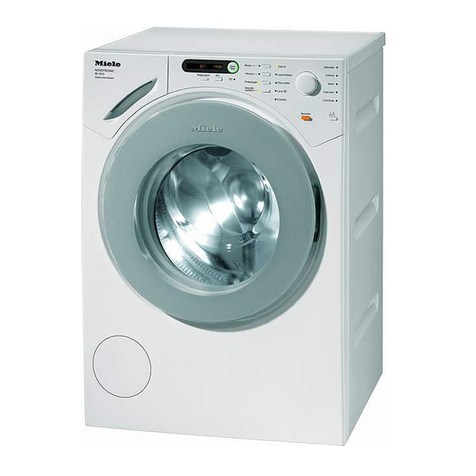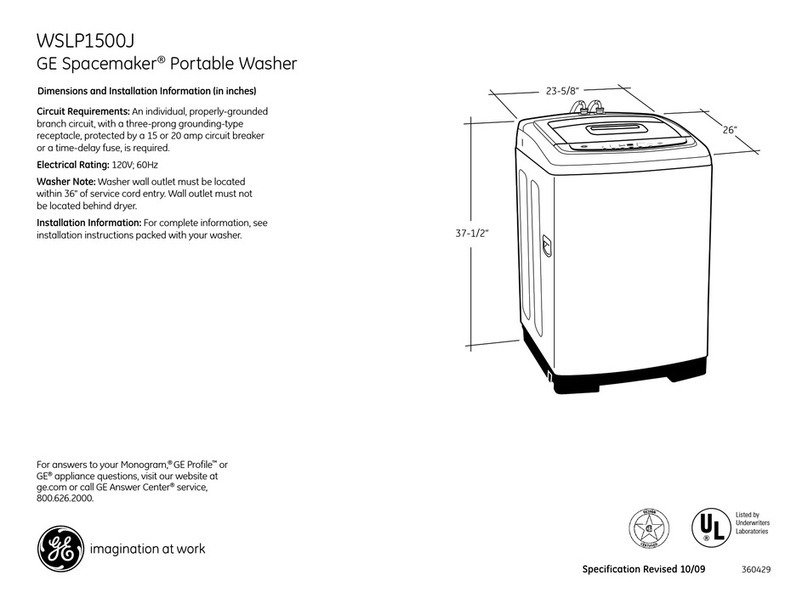Read the operating instructions be-
fore using this machine for the first
time. They contain important infor-
mation about the safety, use and
maintenance of the machine. This
way you will avoid the risk of acci-
dents and damage to the machine.
Keep these operating instructions in
a safe place and ensure that new
users are familiar with the content.
Pass them on to any future owner of
the machine.
Correct usage
Only use the washing machine to
wash items which are specified by
the manufacturer to be machine-wash-
able on the wash-care label, and tex-
tiles composed of hand-washable wool
or wool blend fabrics as well as satin,
lace, silk and other hand-washable
garments.
Any other applications may be danger-
ous. The manufacturer is not liable for
damage resulting from improper use or
operation.
This appliance is not a toy! To
avoid the risk or injury do not allow
children to play on or near it or to play
with the controls. Supervise its use by
the elderly or infirm.
echnical safety
Before setting up the machine,
check it for any externally visible
damage. Do not install and use a
damaged machine.
Before connecting the machine,
ensure that the connection data on
the data plate (fusing, voltage and
frequency) match the mains electricity
supply. If in any doubt, consult a
qualified electrician.
The electrical safety of this appli-
ance can only be guaranteed when
continuity is complete between the ma-
chine and an effective earthing system
which complies with local and national
regulations. It is most important that this
basic safety requirement is present and
regularly tested and where there is any
doubt the household wiring system
should be inspected by a qualified
electrician.
The manufacturer cannot be held liable
for the consequences of an inadequate
earthing system (e.g. electric shock).
Do not connect the appliance to
the mains electricity supply by an
extension lead. Extension leads do not
guarantee the required safety of the
appliance (e.g. danger of overheating).
The machine is built in accordance
with current safety requirements.
Unauthorised repairs could result in un-
foreseen dangers for the user, for which
the manufacturer cannot accept liability.
Repairs should only be undertaken by a
Miele approved technician.
Ensure current is not supplied to the
appliance while maintenance or repair
work is being carried out.
The machine is only completely
isolated from the electricity supply
when:
–it is switched off at the wall socket
and the plug is withdrawn, or
–it is switched off at the mains, or
–the mains fuse is withdrawn.
Warning and safety instructions
6
